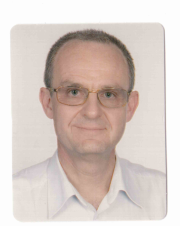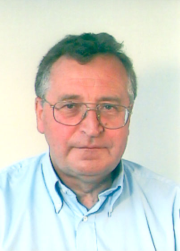
Keynote Speaker

|
Zoltán Tankó Tel :+36 30 921 6615 Tel :+36 30 921 6615 Email: tanko.zoltan@gmail.com Email: tanko.zoltan@gmail.com
|
Simulation of Systems and Large-scale Development Projects
What are the major domains where the application of simulation methodologies is relevant?
Why the CEO or the CFO could be ready to support the simulation of any kind of process or product, and what are the major benefits of simulation for them?
What are the critical details of simulation in the eye of a CO?
The recent economical crisis forces the companies to change – how can the simulation help the decision makers to decide for the right directions?
These questions will be answered by Zoltán Tankó in his keynote speech. Based on his personal experience he introduces some simulation case studies from the perspective of a chief officer of the user, pointing out the key success factors, and the successful working method between the user and the simulation expert.
Curriculum Vitae
As his very first professional work experience in the early 80’s, Zoltán, the electric engineer, simulated microprocessor controlled TTL circuits for measuring purposes. This experience determined his relation to the science of modeling. In his successful career he personally designed and/or applied simulation methods for different applications.
In the early 90’s he became chief officer of Műszertechnika, a dynamic, medium size technology company, responsible for the development and the investments of telecommunications. He established several joint ventures with leading telecommunications companies, and took part in the management of such joint venture companies as the member of the board:
• Ericsson - production of digital telephone switches and software development (Ericsson Hungary)
• GTE - VSAT network service and operation (Hungaro Digitel)
• KPN, Norwegian, Danish, Swedish, Finn Telecom - GSM services (Pannon)
• Alcatel - Local Telephone Companies (the legal predecessor of Invitel Hungary)
In 1996 he joined MATÁV (later: Magyar Telekom), the leading (in local monopoly) telephone service provider of Hungary as a director and later he was appointed to CSO and CMO. He was responsible for creating and developing the Business Communications Business Unit, including marketing, sales, product management and customer care. During the late 90’s and early 2000’s, he built up a professional, customer oriented operation, and forced the technical area of the company to provide high level, professional technical services.
As the chief officer, he was responsible for all business customer related services and operations. He personally overviewed the large customer related projects, and in his work he applied simulation methodologies for the development of the services:
• modeled the pocket switched network of MATÁV,
• simulated the upgrade process – including the detailed workflow – of the change from pocket switch network technology to leased line network,
• modeled the operation of the business customer care organization, including the front and back office functions and the call center processes,
• simulated the introduction of the IP technology for some large banking customers and for the central government.
Today Zoltán manages his own e-business company, providing B2B and B2G process management services.
Zoltán Tankó is the chairman of the IT and Telecom Department of the Budapest Chamber of Commerce and Industry (BKIK) since 1995, and chairman of the IT department of the International Chamber of Commerce (ICC) Budapest since 1997.
Invited Speaker

|
André Gagalowicz Projet MIRAGES INRIA - Rocquencourt Domaine de Voluceau Le Chesnay Cedex, France |
Towards Virtual Try-on Technology
The target of the presented work is to allow a future client to buy a garment directly through INTERNET. He/she will have the possibility to choose the garment, its material and to see himself/herself in 3D, wearing the garment he/she will have not yet bought on a simple PC screen.
The presentation will be restricted to the case of Warp/Weft materials. Our target is to produce realistic 3D simulations; it is a necessary condition for their commercial use. Garments have to correspond exactly to the style that a future client will have chosen and the rendering of textile material, which is strongly influenced by its mechanical
property, has to be realistic as well.
We will first concentrate on the mechanical properties of warp/weft materials and describe Kawabata's results on the characterization of such textile. Kawabata's results are summarized by his famous K.E.S that will also be discussed. The most important outcome of his work is that he proved that textile material has a non linear hysteretic behaviour. It is fundamental to incorporate those properties to a realistic textile model.
We will first describe the overall technique used to produce a 3D mannequin wearing a specific garment constructed from a set of 2D patterns of the type of the 2D patterns employed to create the real garments.
We will then describe the mass/spring model used to model realistically the mechanical behaviour of textile and how it is mapped on each 2D pattern. We will then discuss a technique allowing the automatic pre-positioning of the 2D patterns around the body and how these 2D patterns are sewed. We will finally present the procedure used to animate the global mass/spring system in order to produce the garment evolution around the body. The results of the validation of our choice of non linear mass spring system will be shown.
Some details will be given regarding collision detection and the response of the system in case of collision as well as regarding our technique implementation. In conclusion, we will discuss the remaining problems and our envisioned extensions.
Some videos showing various garment simulations on a numerical mannequin of a real person (obtained by a 3D scanner) will close the presentation.
You can download the presentation here in Powerpoint.  (3MB)
(3MB)
Curriculum Vitae
Dr Andre Gagalowicz is a research director at INRIA, FRANCE. There he created the first laboratory involved in image analysis/synthesis collaboration techniques. He graduated from Ecole Superieure d'Electricite in 1971 (engineer in Electrical Engineering), obtained his PHD in Automatic Control from the University of Paris XI, Orsay, in 1973, and his state doctorate in Mathematics (doctoctorat d'Etat des Sciences) from the University of Paris VI (1983). He is fluent in English, German, Russian and Polish and got a bachelor degree in Chinese from the University of Paris IX, INALOCO in 1983. His research interests are in 3D approaches for computer vision, computer graphics, and their cooperation and also in digital image processing and pattern recognition. He received the prices of the best scientific communication and the best technical slide at the Eurographics'85 conference. he was awarded the second price of the Seymour Cray competition in 1991 and one of his papers was selected by Computers and Graphics journal as one of the three best publications of this journal from the last ten years. he took part to the redaction of five books and wrote more than three hundred publications.









